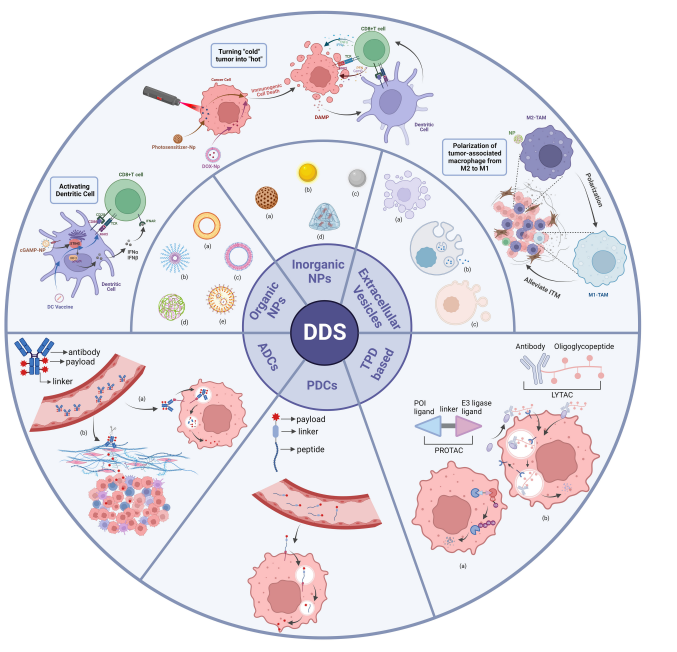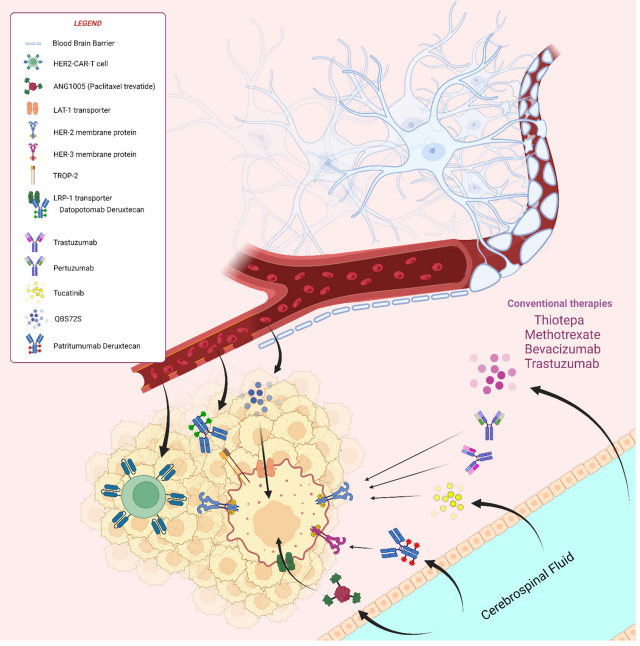Fulvestrant Occupy a Place in the Treatment of Breast Cancer
Abstract
Fulvestrant is a novel estrogen receptor antagonist that can be used as a first-line treatment for metastatic advanced breast cancer in postmenopausal women with ineffective antiestrogen therapy, disease progression, or hormone receptor-positive. It has only an antagonistic effect on estrogen receptors in all tissues but no agonistic effect, which can reduce various adverse reactions caused by stimulation. Compared with Tamoxifen, Fulvestrant has a stronger ER receptor binding, can accurately target, down-regulate, and degrade estrogen receptors, inhibit tumor growth, and can inhibit other signaling pathways, and delay tumor resistance.
Breast cancer is the malignant tumor with the highest morbidity and mortality in women worldwide. According to the latest global cancer data released by the World Health Organization’s International Agency for Research on Cancer, the number of new cases and deaths of breast cancer in 2020 accounted for first place in malignant tumors. Breast cancer is a molecularly heterogeneous disease, which is divided into at least five major subtypes based on immunohistochemistry. These subtypes have different risk factors, different biological behaviors, and different responses to systemic and local treatments. Among them, about 70% of breast cancer is hormone-dependent, that is, the expression of estrogen receptor and/or progesterone receptor generally called luminal subtype, which is the most common subtype of breast cancer. For this subtype of breast cancer patients, adjuvant endocrine therapy occupies a very important position. Endocrine therapy generally includes surgery, radiation, and drugs. Among them, radiation damage to glands may be incomplete or cause damage to adjacent organs; surgical resection has greater damage, more complex, and concurrent risk, so the most commonly used drug treatment with good curative effect and small side effects.
The main classification of endocrine therapy drugs for breast cancer: (1) blocking estrogen receptor activity (anti-estrogen therapy); (2) Blocking estrogen synthesis and reducing estrogen levels: premenopausal ovarian castration, menopause with aromatase inhibitors (AIs); (3) High doses of progesterone, androgen, luteinizing hormone analogues, etc. to counteract the effects of estrogen.
Pharmacological effects of Fulvestrant
Fulvestrant is a new class of estrogen receptor antagonist-estrogen receptor down-regulation anti-breast cancer drugs. Since estrogen receptor (ER) is found in many breast cancer patients and tumor growth is stimulated by estrogen, the main method for treating breast cancer is to reduce the concentration of estrogen. Fulvestrant binds to estrogen receptors with high affinity, which is similar to the affinity of estradiol binding to estrogen receptors, and then separates heat shock protein 90 (HSP90) and rapidly degrades estrogen receptors, reducing the speed of dimerization of the fulvestrant-estrogen receptor complex and reducing the binding of the fulvestrant-estrogen receptor complex to the estrogen effector element (ERE). The drug can also block the receptor, inhibit the binding of estrogen, stimulate the morphological changes of the receptor, reduce the concentration of ER, and damage tumor cells. This effect through the ER channel is related to the reduction of cell proliferation marker Ki-67, which can down-regulate the ER protein in human breast cancer cells, down-regulate ER in tumor cells, and minimize tumor growth. Fulvestrant treatment caused a variety of changes in estrogen receptor function, such as reducing dimerization, increasing conversion, and destroying nuclear localization, blocking the role of estrogen. Fulvestrant not only blocks estrogen receptors but also significantly reduces intracellular estrogen receptor levels.
Unlike the non-steroidal anti-estrogen tamoxifen, fulvestrant has no estrogen-like effect. It down-regulates ER by accelerating ER degradation, affects ER dimerization, interferes with ER nuclear localization, and reduces ER and ERE binding, thereby inhibiting breast and endometrial hyperplasia. It is still effective for tamoxifen-resistant breast cancer, and some phase III clinical trials have achieved satisfactory results. fulvestrant has become a new generation of effective drugs for the treatment of advanced breast cancer. The results suggest that fulvestrant can inhibit the proliferation of ER-positive endometrial cancer cells, promote their apoptosis, and block their entry into the cell cycle, without leading to the occurrence of endometrial cancer. Because tamoxifen has a weak estrogen-like effect, it can cause endometrial hyperplasia and even canceration, which limits its application.
Related clinical studies of fulvestrant
Preclinical study
In the preclinical trial stage, fulvestrant was mainly compared to tamoxifen, which was the gold standard for endocrine therapy for advanced breast cancer at that time. A comparative study of the effects of tamoxifen and fulvestrant on the growth of human MCF-7 tumor cells injected into mice found that compared with tamoxifen, fulvestrant inhibited tumor growth for twice as long, down-regulated estrogen receptor-related genes, and delayed tumorigenesis to a greater extent than tamoxifen.
Clinical study of early dose determination
Based on preclinical trials, early clinical studies comparing fulvestrant and tamoxifen were carried out. The results of evaluating the pharmacodynamics of fulvestrant and the changes of biomarkers between baseline biopsy and surgical samples in women with early breast cancer showed that the expression levels of ER, PgR, and Ki67 were significantly reduced after fulvestrant treatment. A randomized, multicenter study compared the efficacy of different doses (50mg, 125mg, and 250mg) of fulvestrant 2-3 weeks before surgery with oral tamoxifen 20mg or placebo in untreated early breast cancer. Compared with the placebo group, any dose of fulvestrant showed a significant decrease in ER expression, and the reduction of ER, PgR, and Ki67 by fulvestrant showed a dose-dependent manner. Compared with the tamoxifen group, fulvestrant 250 mg made the down-regulation of ER more obvious, and the expression of PgR was also significantly down-regulated. In contrast, tamoxifen increased the expression of PgR, which also indicates the different mechanisms of the two drugs. This study supports and confirms the results and hypotheses of preclinical studies, and provides evidence support for the follow-up trials of fulvestrant 250 mg dose group.
Clinical study of fulvestrant in premenopausal breast cancer
At present, most of the studies on fulvestrant are carried out in postmenopausal women, so the clinical problems of premenopausal patients using fulvestrant need to be further explored. In the study of fulvestrant combined with CDK4/6 inhibitors, PALOMA 3 and MONARCH-2 studies in premenopausal patients did not show additional abnormalities in efficacy and safety. However, studies on the use of fulvestrant monotherapy in premenopausal patients are still relatively scarce. A study found that preoperative administration of fulvestrant 750 mg in premenopausal women has a good biological effect, and compared with tamoxifen, the expression of ER and Ki67 in tumor cells is significantly reduced. This study suggests that fulvestrant monotherapy may require a higher dose level to play a role in the high estrogen environment of premenopausal patients.
Safety of fulvestrant
In addition to clinical efficacy, tolerance, that is, safety, is also an important part of dosing monitoring. Due to the new therapeutic mechanism of fulvestrant, the lack of estrogen receptor agonist activity compared with tamoxifen will not lead to thromboembolic events and endometrial hyperplasia in principle, meaning that side effects in this area are reduced relative to SERMs.
Different from estrogen deprivation of AIs, fulvestrant has been shown to have the same or lower risk of musculoskeletal side effects. In addition, the existing research results have not yet shown the harmful effects of fulvestrant on bone mineral density. However, a potential problem with fulvestrant is the nature of its parenteral administration, so injection site pain is a special but rare adverse reaction, and no patients withdrew from the study. In addition, there was no significant increase in discomfort at the injection site between different doses, and there was no difference in the quality of life between different dose groups. In contrast, regular injections ensure regular contact with medical staff and can closely monitor patient medication compliance. Due to intramuscular injection, fulvestrant can still be administered even in the case of oral restriction or inability to take orally, such as in patients with intestinal obstruction.
*This article is a popular science article, and the products provided by MuseChem are only for scientific research use.




